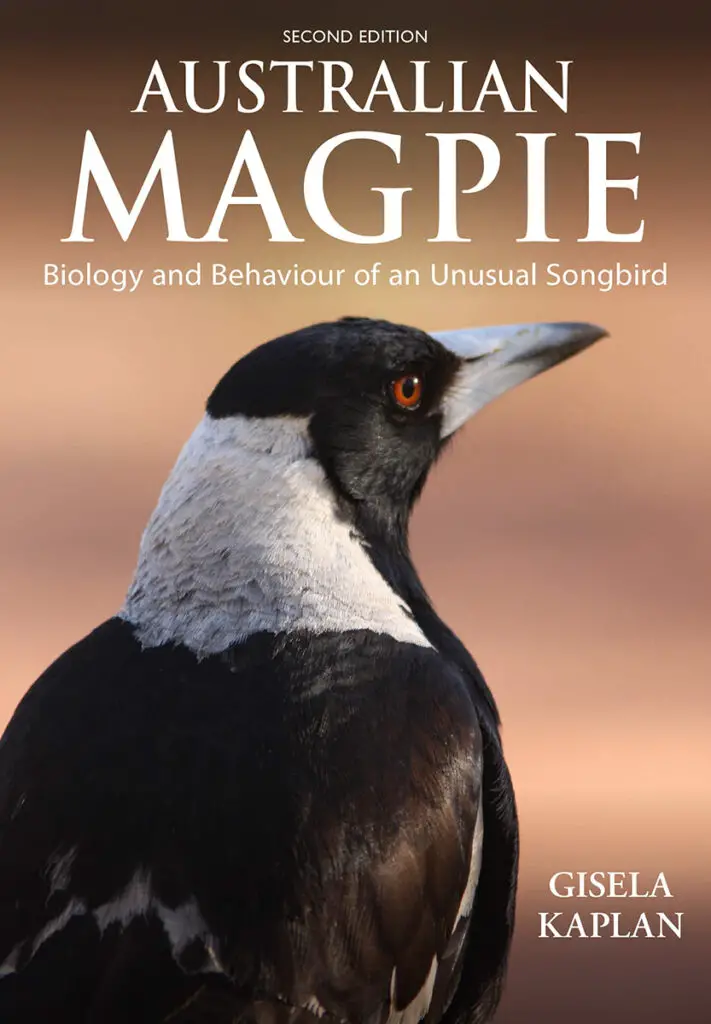If you are searching for what baby magpies eat, you have likely found one abandoned or injured. This article has all the information you need about what baby magpies eat. After reading this you can make an informed decision about whether or not to feed any bird in your care. All the information in this article was sourced from qualified animal carers and other bird experts.
Baby Magpies in the wild eat earthworms, crickets, grasshoppers, beetle larvae, spiders, ants, and other invertebrates. When being cared for by professional animal carers, they will be fed live crickets, mealworms, or a special slurry for insectivores mixed with high-quality raw beef mince.
Continue reading to learn more about what baby magpies eat in the wild and while in care. This article is not designed to be a how-to for caring for baby magpies. You should always take any bird to a qualified animal carer and I provide links to various care providers later in the article.

As an Amazon Associate, I earn from qualifying purchases. Birdwatch World earns commissions from Amazon and similar affiliate programs from any purchases made via links in this article.
What Do Magpies Eat In The Wild?
Australian Magpies
Australian Magpies are insectivores which means they feed on insects, worms, and other invertebrates. They will also take small vertebrates such as frogs, lizards, and small birds or mammals. They have also been known to feed on carrion (dead animals) and also grain.

Studies done on the diets of Australian magpies found they will eat over 140 different items. The table below is a summary sourced from Australian Magpie – Biology and Behaviour of an Unusual Songbird by Gisela Kaplan.
| FOOD TYPE | EXAMPLES |
|---|---|
| Plant Matter | seeds, grains, dicotyledons, tubers, figs, walnuts, prickly pears |
| Invertebrates | earthworms, snails, millipedes, cockroaches, cockroach eggs, mantids, grasshoppers, crickets, phasmids, cicadas, antlions, beetles, beetle larvae, leaf beetles, weevils, ground weevils, moths, pupae, caterpillars, armyworms and larvae, bees, ants (at least 8 varieties), crustaceans, spiders, and spider egg sacks, scorpions |
| Reptiles/Amphibians | frogs, skinks, small dragons |
| Mammals | mice, small rodents, meat scraps |
| Other | bird eggshells |
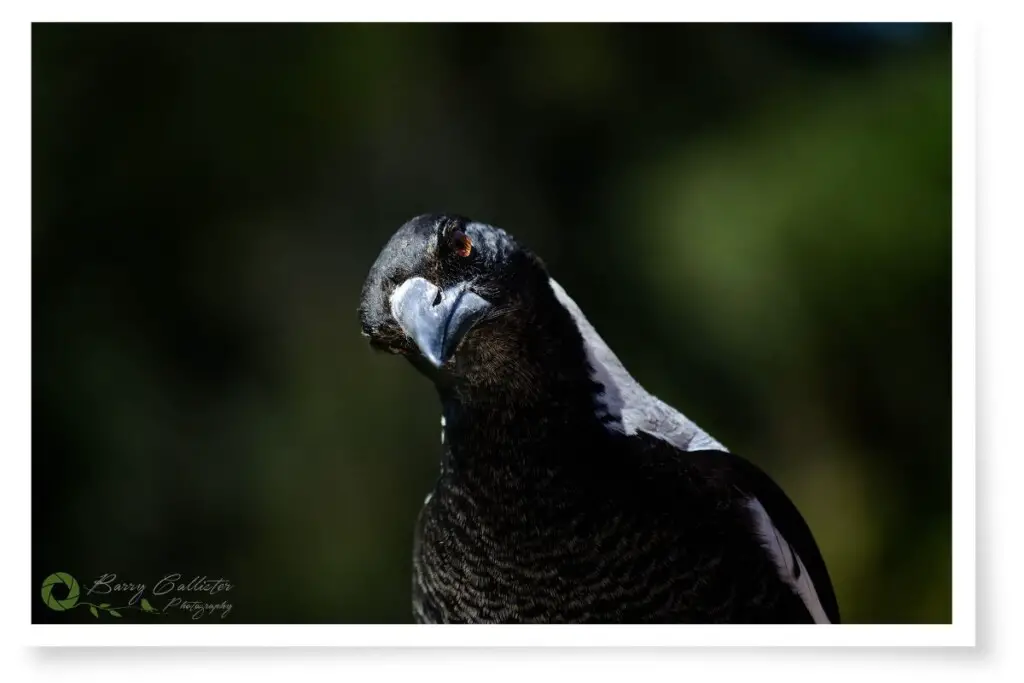
Are magpies crows? Find out in this article here on my site.
Eurasian Magpies
Eurasian magpies are omnivorous which means they will feed on a variety of both plants and animals. They are mainly carnivorous scavengers, feeding on carrion at any opportunity. Their diet varies depending on their location.

Invertebrates make up a large portion of their diet, such as flies, caterpillars, spiders, worms, and beetles, especially Coleoptera beetles.
They will also take small frogs, lizards, bird eggs, and nestlings. Very rarely, they will take adult birds and have been seen preying on Common Swifts. They have even been known to prey on young rabbits.

Seasonal berries, seeds, and fruits also feature in their diet, as do food scraps scavenged from picnic sites, parks, and refuse bins.
What Do Magpies Feed Their Young?
Magpie nestlings receive a rich and varied diet that is fed to them by both of their parents. Earthworms are a frequent food item; these do not provide any nutritional value but may provide fluids.
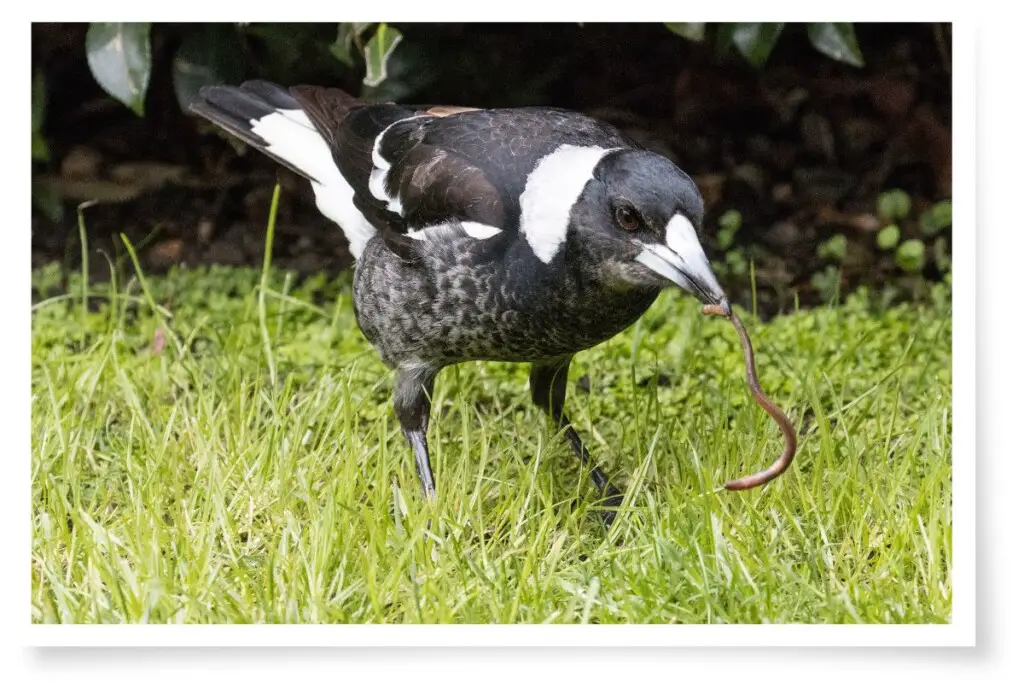
Magpies do not drink water until they have fledged and perhaps not for several weeks after they have fledged. Earthworms may provide the hydration the young birds need.
Scarab beetle larvae also feature on the menu, as do other insect larvae as they would be high in protein. The baby’s parents will dismember scarab beetle larvae before feeding them to the fledglings as the pincers on their heads can deliver a strong bite.
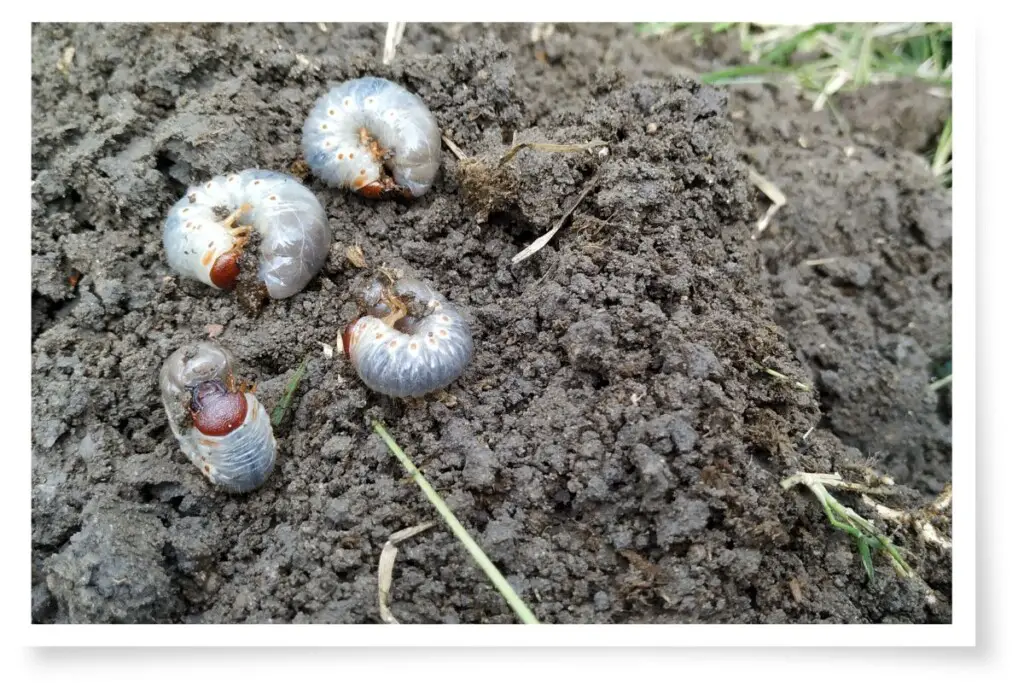
In my research, I could not find much evidence of study that has been done into exactly what adult magpies feed their nestlings. There does however seem to be some order to what they feed them. They seem to instinctively know which foods to give their young at various stages of growth.
This is something that humans have not been able to get right when caring for fledgling birds. The diet provided to hand-raised birds inevitably lacks the proper nutrients they require for their growth. And that is not the only issue with feeding wild birds; I’ll go into more detail about this later in the article.
Let Nature Take Its Course
Before I discuss the reasons why feeding wild birds may not be a good idea, I want to touch on the act of taking them from the wild in the first place.
A lot of people still believe that if they find a fledged bird looking helpless on the ground that it must have “fallen from the nest” or have “been abandoned.” This is not necessarily the case.

If you ever find a young bird on the ground, try to resist your human instinct to help or intervene. Stand back as far as you can where you can still see the bird and just watch for a while. Chances are, you will eventually see an adult bird tend to the young one you thought to be helpless or abandoned. You may have to wait up to an hour or perhaps more for this to happen so be patient.
Most times, the adult birds will be off somewhere finding food for the fledgling and once you have left the area, they will return. If you feel you have to help, gently pick the bird up and place it under the cover of a bush or undergrowth where it will be safer from predators until its parents return.
Many species, including magpies, will fledge before they can fly. They will spend some time on the ground with their parents learning to forage and building their flight muscles before they are actually able to fly and find food for themselves.
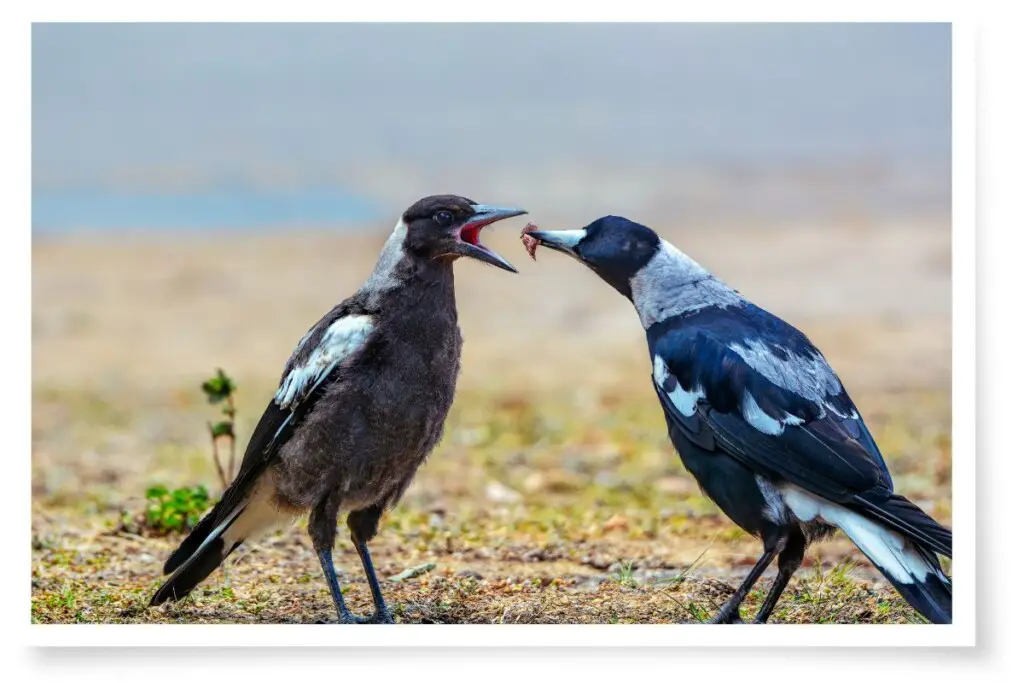
I know it’s hard not to step in and help when they look so cute, fluffy, and helpless. However, it is best to let nature take its course wherever you can.
Why You Should Avoid Feeding Baby Birds
As I have already mentioned, it is not always a good idea to feed wild baby birds. In this section of the article, I’m going to explain a couple of reasons why.
Firstly, there is the issue of the bird not getting the nutrients it needs to grow strong and healthy. As hard as you try, you are never going to be able to match the dietary needs of a young magpie the same way its parents can.
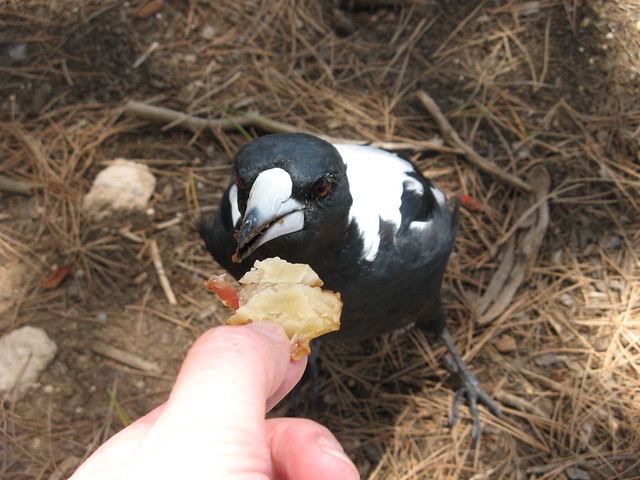
Adult birds have centuries of built-in programming that enables them to know exactly what their young need to eat and when they need to eat it.
In her book Australian Magpie – Biology and Behaviour of an Unusual Songbird, Gisela Kaplan mentions comparing the weights and beak lengths of birds she was hand-rearing to those of wild magpies.
She found that hand-raised magpies consistently had shorter beak lengths than wild-raised birds. This suggested that the man-made diet lacked ingredients that were crucial to the bird’s development.
Secondly, there are behavioral traits the birds are missing out on while being in the care of a human being.
Find out why you should not feed bread to wild birds in this article.
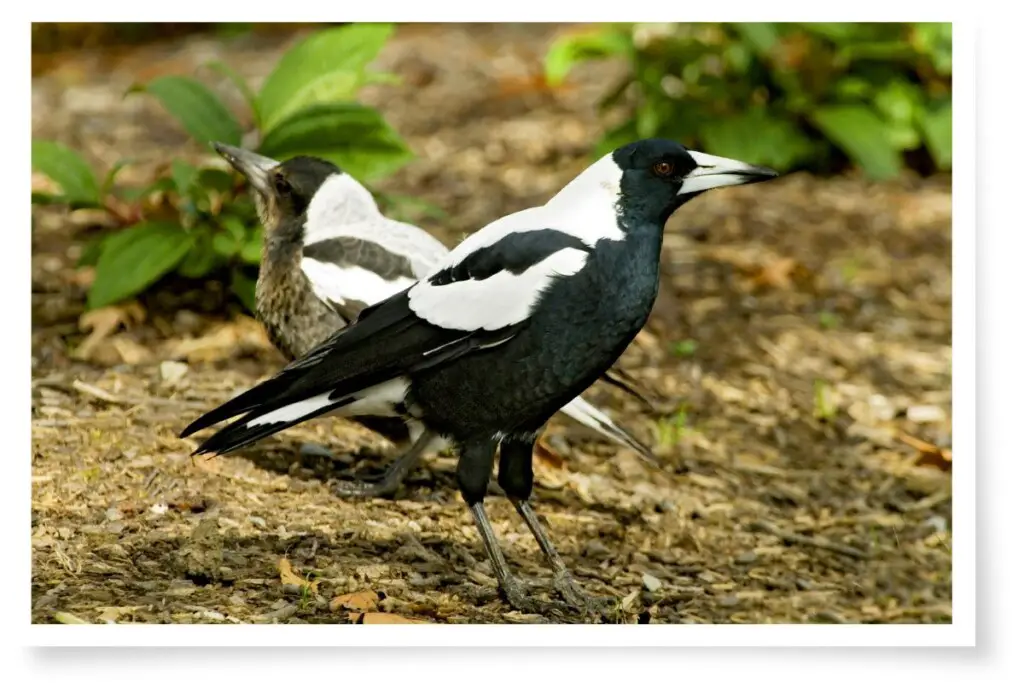
Fledgling magpies are fed by their parents and helpers for 3 months after leaving the nest. During this time, they learn vital skills about how to forage, find, and eat food in the wild. Birds being hand-raised are missing out on learning those crucial survival skills.
Birds rehabilitated by humans, fed on slurry and mince or meal worms served on a plate, usually die within a month or two prior to being released back into the wild.
They need their food to be presented to them in a way that mimics how they’d find it in nature. This is why putting a bird into the hands of a qualified wildlife carer is so important.
How To Find Help For Baby Magpies
If you find a baby magpie that you determine to be hurt in some way or you cannot see its parents anywhere, you should get it to a wildlife carer right away. Below you will find details for various organizations in Australia and the UK.
Wildlife Carers Australia
State/Area | Oranisation | Phone | Web |
VIC | Australian Animal Rescue | 0430 883 083 | |
Nationwide | Wildlife Rescue Australia | 1300 596 457 | |
NSW | WIRES | 1300 094 737 | |
VIC | Wildlife Victoria | (03) 8400 7300 | |
SE QLD | Wildcare | (07) 5527 2444 | |
QLD | RSPCA | 1300 ANIMAL 1300 264 625 | |
Far North QLD (Cassowary Coast Cardwell to Innisfail) | Mission Beach Wildcare | 0439 687 272 | |
Far North QLD (Cardwell to Cape York) | Far North Queensland Wildlife Rescue | (07) 4053 4467 | |
QLD (Sunshine Coast) | Wilvo's | (07) 5441 6200 | |
Far North QLD (Atherton Tablelands) | Tablelands Wildlife Rescue Inc. | (07) 4091 7767 | |
NT (Darwin) | Darwin Wildlife Sanctuary | 0473 992 581 | |
NT (Darwin) | Wildcare NT | 0408 885 341 or (08) 8988 6121 | |
NT (Alice Springs) | Wildcare NT | 0419 221 128 | |
NT (Kathrine) | Wildcare NT | 0412 955 336 | |
SA | SA Fauna Rescue | (08) 8289 0896 | |
WA | Wildcare WA | (08) 9474 9055 | |
TAS | Bonorong Sanctuary | 0447 264 625 |
Wildlife Carers UK
Oranisation | Phone | Web |
Wildlife Aid Foundation | 01372 360404 | |
RSPCA (Norfolk) | 0300 123 0709 | |
RSPCA (East Sussex) | 0300 123 0723 | |
RSPCA (Cheshire) | 0300 1234 999 | |
RSPCA (Somerset) | 0300 123 0721 | |
St. Tiggywinkles | 01844 292292 | |
Three Owls Bird Sanctuary and Reserve | 07973 819389 | |
Help Wildlife UK | This is a fantastic online searchable directory for wildlife carers. Simply enter your location and it brings up a list and map of local carers. |
What To Do If You Can’t Find Help Right Away
If you have found a sick or injured baby bird and can’t find a carer immediately, this section will help you with some temporary care solutions. As I have already mentioned, it’s not a great idea to feed wild birds but if you have to try and keep one alive until you can get it to professional care, here’s what to do.
The following information was sourced from a phone call with a WIRES representative and also from correspondence with Gisela Kaplan the author of the magpie book I have referenced at various stages in this article.
The first step is to place the bird gently into a dark, quiet, warm place. You can wrap it in a towel, or place it into a ventilated box or container to keep it safe and warm.
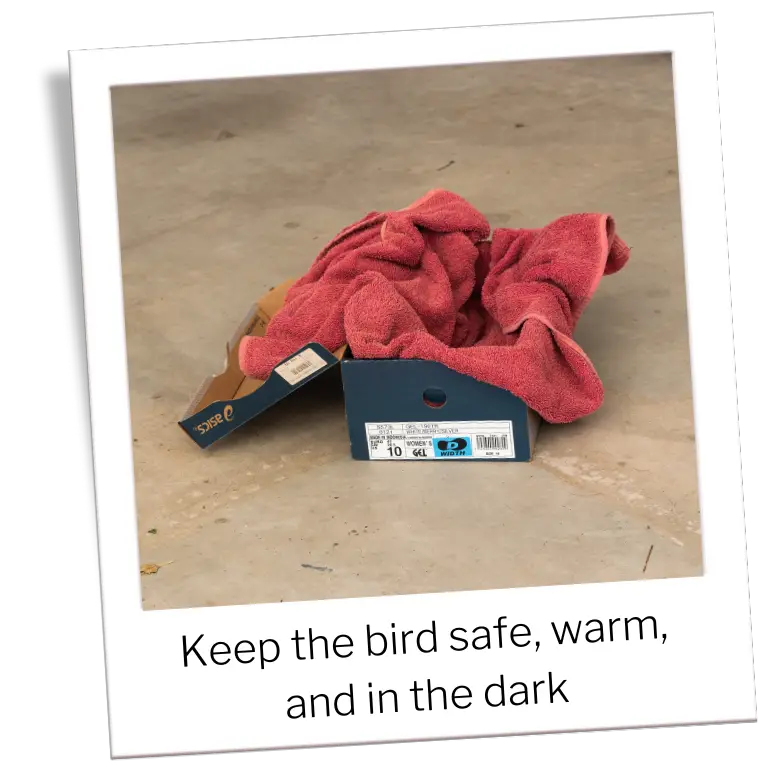
DO NOT FEED OR GIVE WATER TO THE BABY MAGPIE. I know I am stressing this a lot but it is important for many reasons. A baby bird can drown if given water. You also have no idea of any internal injuries the bird may have which could make eating fatal.
The best thing you can do for the bird at this stage is to keep it safe and warm and monitor its condition.
What Do Wildlife Carers Feed Baby Magpies
Australian Magpies
When baby magpies are in care, they are fed a special diet that is designed to be as close to their natural diet as possible. Below are some examples of what wildlife carers will feed them:
- Live insects such as crickets, grasshoppers, and similar invertebrates.
- Mealworms
- Wombaroo Insectivore Rearing Mix – this is a powder that is mixed to create a slurry and then mixed with minced meat and perhaps some breadcrumbs. The resulting mixture can be formed into little grub-sized rolls and fed to the fledglings.
A great resource for Australian wildlife of all types and their natural diets is Let nature feed itself from the WIRES website.
Eurasian Magpies
The following foods were listed on the Three Owls Bird Sanctuary and Reserve website as “emergency bird feeds.” I would not think these are things that carers would necessarily feed birds they are rehabilitating, most likely more what you could feed one in the absence of a qualified carer.
- Dried dog food soaked in water until soft and spongy.
- Fish or meat brawn
- Raw red meat or chicken cut up into small portions or minced. (Avoid liver, sausage or bacon).
- Cheese
- Hardboiled eggs
- Small pieces of bread
Conclusion
There really is no substitute for a parent bird when it comes to raising healthy chicks. While we have a strong instinct to help wild animals, we should take a step back and let nature do what it does.
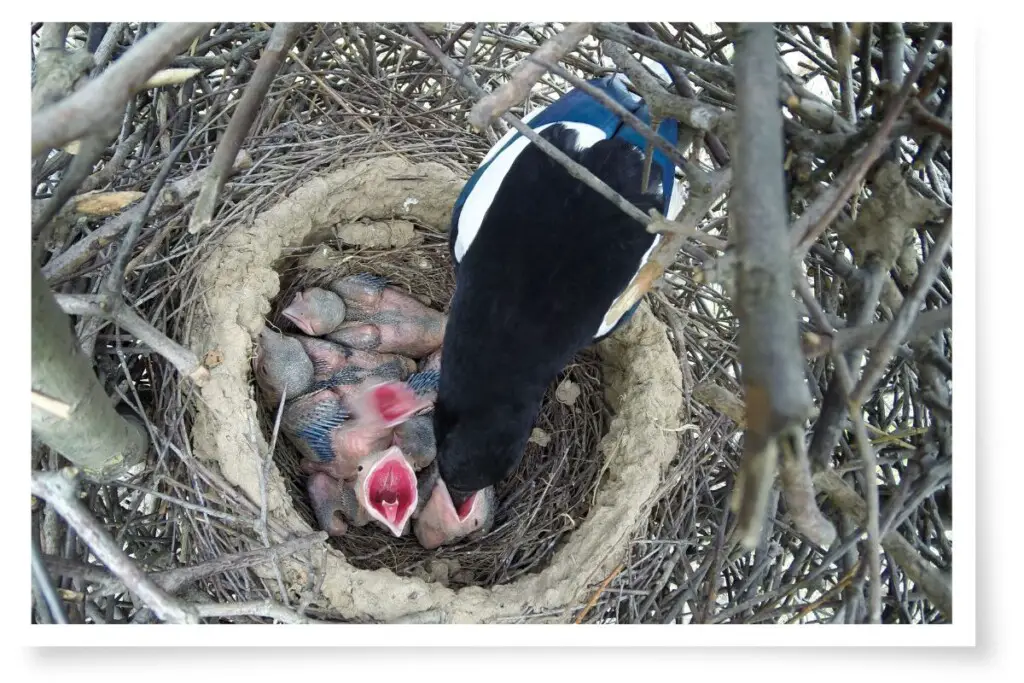
In this article, you have learned that abandoned baby magpies are not always what they appear to be. More often than not, they may simply be awaiting the return of their parents who will have some food for them.
Even if the bird has been abandoned or ejected from the nest, there could be a very good reason for this. Birds seem to have an innate sense for telling if their offspring have any disease or developmental problem that will prove fatal. A lot of birds ejected from nests have later been found to have terminal issues of some kind.
You have also learned quite a lot about the diet of magpies in this article. If you choose to learn more, pick up a copy of Gisela Kaplan’s book Australian Magpie – Biology and Behaviour of an Unusual Songbird.
Gisela also suggested this book to me The Food Of Australian Birds 2: Passerines by Barker RD, Vestjens WJM (1990).
Thank you for reading this post today. There are many more articles packed with interesting bird, bird watching, and bird photography facts on the Birdwatch World website. Please browse more before you leave.
References
- Australian Magpie – Biology and Behaviour of an Unusual Songbird – Gisela Kaplan
- What Do Magpies Eat? – RSPB
- Selective Food Gathering by Australian Magpie – Ally T.H. (1979)
- Emergency Bird Feeds – Three Owls Bird Sanctuary and Reserve
- Birds of The World – The Cornell Lab of Ornithology

